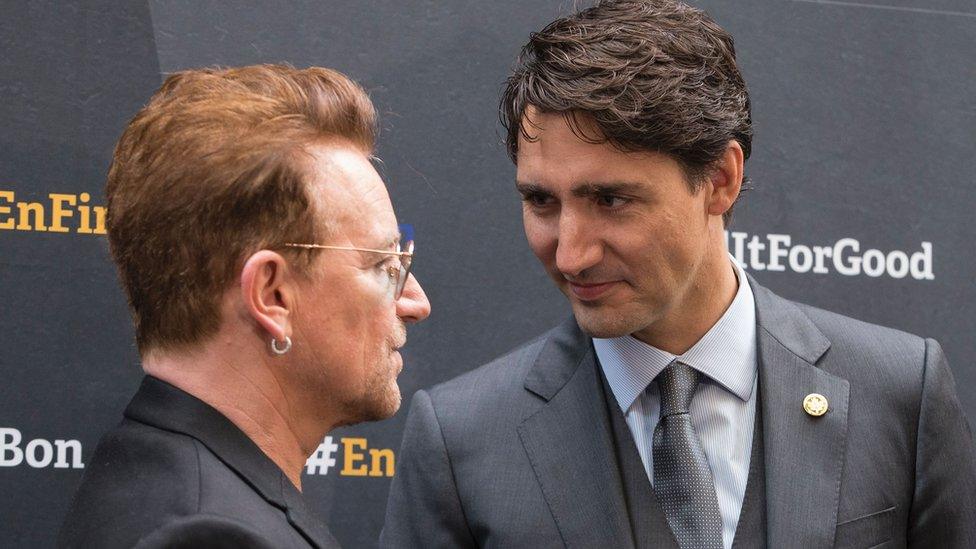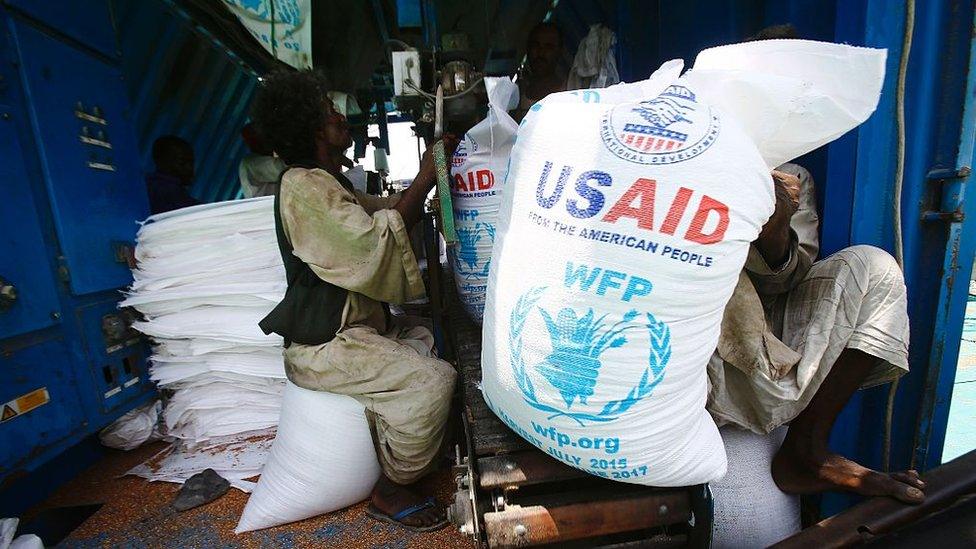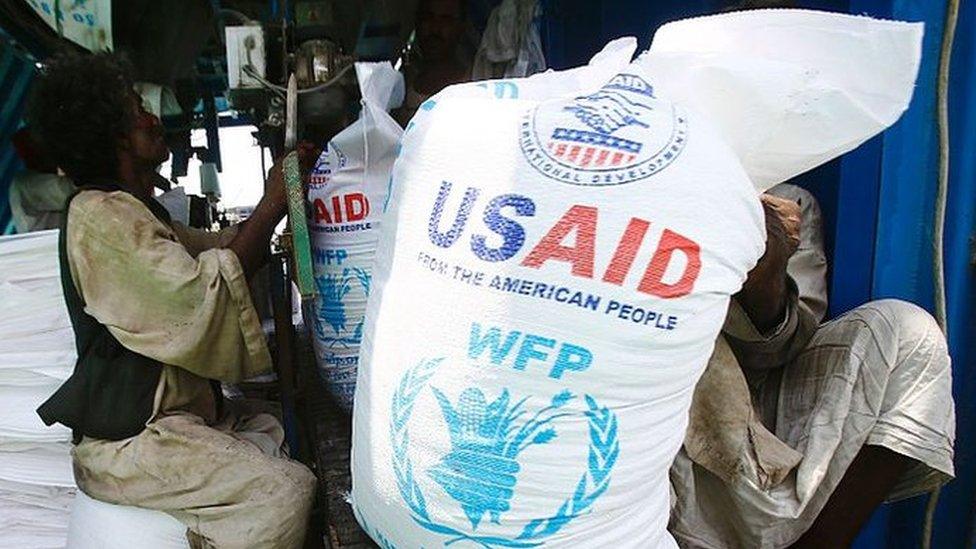Canada last in foreign aid, defence spending, report says
- Published

Canada has fallen behind on spending on defence and development compared to its global peers, new study says
Canada is last compared with its global peers when it comes to defence and aid spending, a new report says.
Ottawa came less than halfway to meeting international spending benchmarks in those areas.
The Global Canada study uses those two funding areas to measure a country's global engagement.
The analysis also suggests Canada's level of spending on international assistance as a share of GDP is close to an all-time low.
Mr Trudeau made "Canada is back" a catchphrase after winning the federal election in 2015 and promised a new era of global engagement.
Global Canada founder Robert Greenhill, a former president of the federal development agency, said that Canada is not back, it is "far back".
"We actually don't believe in doing our fair share at this point," he said.
The report, Assessing Canada's Global Engagement Gap, released on Wednesday, compares Canada's share of national income committed to both collective security and to international assistance with that of other G7 nations and similar mid-sized, advanced countries like Norway and Australia.
Canada and Japan were tied in last place by committing 1.2% of GDP to combined spending on defence and aid.
In comparison, the UK and Norway spent 2.6%, Germany spent 1.7% and Italy spent 1.5%.
The US spent 3.5%, mostly on defence.
US President Barack Obama has pressured Canada to increase its Nato spending. President-elect Donald Trump has also been critical of laggard Nato nations.
Canada currently spends 0.97% of its GDP on the military alliance, less than half the 2% benchmark.

Canada has been pressured by stars like Bono and foreign aid agencies to boost spending
Looking at just foreign aid, the analysis, using the Gross National Income (GNI) measure, suggests the Liberal government's commitment to development in its first year was slightly lower than the spending average under Conservative Prime Minister Stephen Harper's government - 0.26 % of GNI compared to 0.30% GNI.
The international target for foreign aid spending is 0.70% of GNI.
Critics have repeatedly singled out Canada over the years for falling short on aid funding.
Mr Trudeau has said that United Nations target is too ambitious for Canada in the near future.

Mr Greenhill said the Trudeau government inherited a history of cuts to development from the 1990s and between 2010-14.
"Almost for a generation Canadians politicians have taken their eye off their international commitments," he said.
Unless it increases funding in those areas, the current Liberal government will end up with the lowest commitment to development aid of any Canadian government in the last 50 years, according to the report.
Mr Greenhill estimated an annual investment of CA$4bn (US$3bn; £2.5bn) would be necessary to bring funding levels to those seen in the 1970s and 1980s.
"Being a G7 country and trying to shape a better world does have costs," he said.
There have been recent commitments by Mr Trudeau in both areas.
Last August, the government committed 600 troops, 150 police officers, and CA$450m over three years to a still unspecified United Nations peacekeeping operation.
It also pledged increased spending over two years to help the Global Fund, which focuses on the prevention and treatment of AIDS, tuberculosis and malaria in more than 100 countries.
Global Canada, founded in 2014, seeks to "advance Canada's global engagement".
- Published20 December 2016

- Published5 January 2016